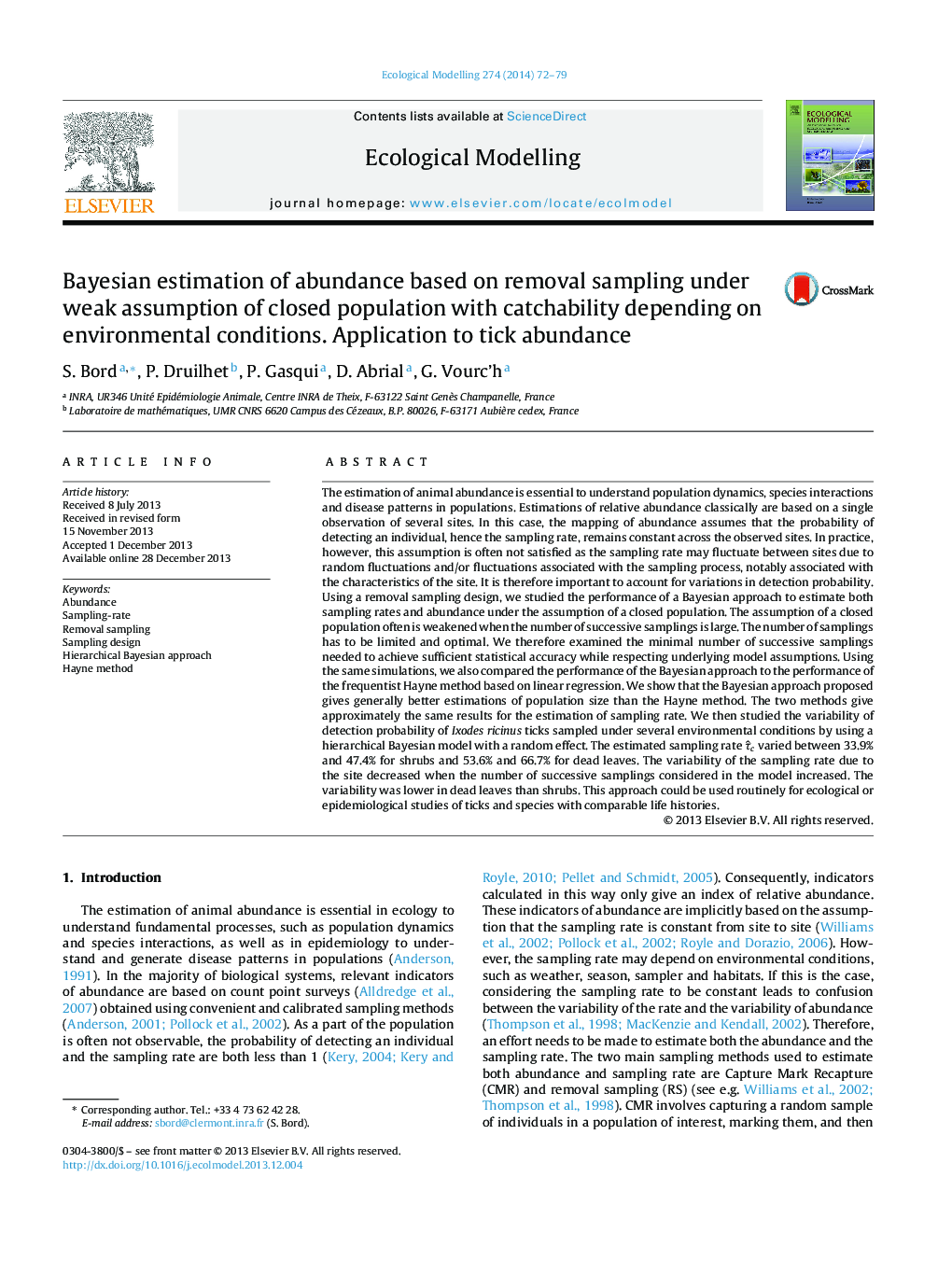| Article ID | Journal | Published Year | Pages | File Type |
|---|---|---|---|---|
| 6296974 | Ecological Modelling | 2014 | 8 Pages |
Abstract
The estimation of animal abundance is essential to understand population dynamics, species interactions and disease patterns in populations. Estimations of relative abundance classically are based on a single observation of several sites. In this case, the mapping of abundance assumes that the probability of detecting an individual, hence the sampling rate, remains constant across the observed sites. In practice, however, this assumption is often not satisfied as the sampling rate may fluctuate between sites due to random fluctuations and/or fluctuations associated with the sampling process, notably associated with the characteristics of the site. It is therefore important to account for variations in detection probability. Using a removal sampling design, we studied the performance of a Bayesian approach to estimate both sampling rates and abundance under the assumption of a closed population. The assumption of a closed population often is weakened when the number of successive samplings is large. The number of samplings has to be limited and optimal. We therefore examined the minimal number of successive samplings needed to achieve sufficient statistical accuracy while respecting underlying model assumptions. Using the same simulations, we also compared the performance of the Bayesian approach to the performance of the frequentist Hayne method based on linear regression. We show that the Bayesian approach proposed gives generally better estimations of population size than the Hayne method. The two methods give approximately the same results for the estimation of sampling rate. We then studied the variability of detection probability of Ixodes ricinus ticks sampled under several environmental conditions by using a hierarchical Bayesian model with a random effect. The estimated sampling rate ÏËc varied between 33.9% and 47.4% for shrubs and 53.6% and 66.7% for dead leaves. The variability of the sampling rate due to the site decreased when the number of successive samplings considered in the model increased. The variability was lower in dead leaves than shrubs. This approach could be used routinely for ecological or epidemiological studies of ticks and species with comparable life histories.
Related Topics
Life Sciences
Agricultural and Biological Sciences
Ecology, Evolution, Behavior and Systematics
Authors
S. Bord, P. Druilhet, P. Gasqui, D. Abrial, G. Vourc'h,
